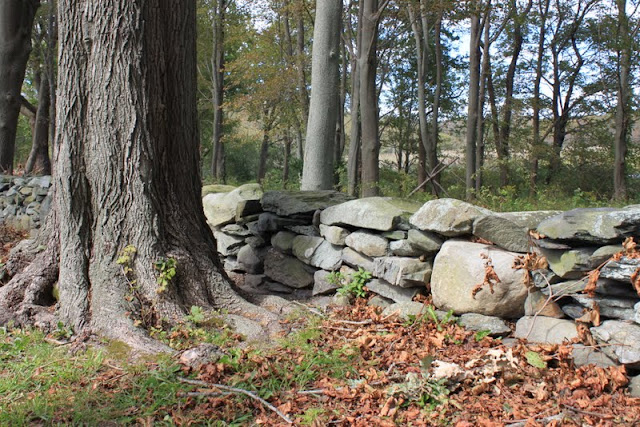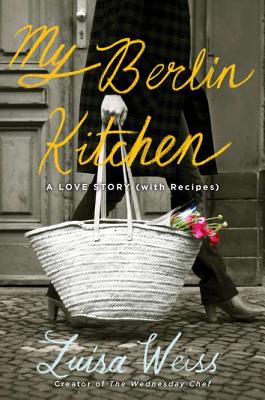I'd like to pretend all my blog posts and series spill out onto the computer fully-formed. But like most of my writing, creating blog content is a slow, careful process. There's a lot of planning, rewriting, deleting, and then some more rewriting. Sometimes it's painful. Sometimes I'd rather take pretty pictures or read other people's effortless-looking blogs or go for a walk.
So, inspired by
Joy the Baker's admirable honesty, today I'm going to give you a glimpse behind the curtain. This is how I made potato pancakes yesterday...and all the thinking and research that went into it.
Two Days Prior (Inspiration Time)
I start thinking about what I could make for the blog. I glance longingly at my pile of cooking magazines and the exciting
East-West blend of Simply Ming that I got from the library. If only I could count Thai green curry sauce as historical. I suppose I could...if I knew more about Thai history and cooking.
Note to self: new blog series!
Then I talk myself down from starting yet another massive research project. I flip idly through
The "Settlement" Cook Book and mark some cookie recipes. But Josh and I made Christmas cookies over the weekend, and we definitely can't eat them all plus more cookies. (Here Josh would say: "But, delicious!") So I read
Bon Appetit instead.
 |
| inspiration! |
One Day Prior (Research Time)
Adam Rapaport's article on
the perfect latke makes my mouth water. I love potatoes. When a friend hosted a supper club several months ago, she and her sister waxed poetic about how potatoes would definitely be included in their last meals. I firmly agree. There is nothing like the potato.
Perhaps there's a similar recipe I could make for the blog. I flip through
The "Settlement" Cook Book again, and lo and behold, there's a recipe for potato pancakes! And I could probably think of a good angle for the post...
But today we have leftovers, and I am fighting a cold that makes me feel like death warmed over. So I'll wait. I eat my pasta and imagine it tastes like potatoes.
(Can you tell I have an issue with leftovers? And that I was raised in a good Midwestern family with lots and lots of a certain root vegetable?)
Day Of (Cooking/Photo Time)
 |
| potato pancakes, posing with applesauce |
My cold has significantly improved, and I leave school bounding with energy. When I get home I set up my equipment: ingredients, box grater, kitchen towel, fry pan, and of course, CD player. I'm going through a phase where I listen to dramatized Agatha Christie mysteries while I cook...it lends the whole enterprise an air of drama.
The
Settlement recipe doesn't provide much in the way of guidance, so I open up
Bon Appetit and skim the latke article. Rapaport recommends squeezing the grated potatoes to rid them of excess water--this sounds like a good idea. Then I make assumptions about the other instructions, based on what I know about frying up regular pancakes. I cut the ingredients from the
Settlement recipe in half (it's only Josh and me, not our turn-of-the-century family of six) and get to work. The light's dying, so I do it quickly, hoping to get some decent natural-light photos in before the day ends.
But that's not to be, so I set up my kitchen table with seasonal linens and turn on the lamp for additional lighting. I spend the next ten minutes or so taking glamour shots of fried potato cakes.
One Day After (History Time)
 |
| New York settlement cooking class |
Before school starts, I glance at the
Wisconsin Historical Society's website for a reminder about the Milwaukee Settlement. I did
the majority of my research for this project when I first started using the book, so most of this is familiar. But I want to confirm my suspicions that this recipe is for German Jewish potato pancakes, rather than for those of another culture. And indeed, I find that Lizzie Kander, the writer of
The "Settlement" Cook Book, taught Jewish women how to cook at the Settlement, so I'm fairly certain that these potato pancakes could have been used in a turn-of-the-century Hannukah celebration.
So I gather my historical photos from more or less reputable sources, upload my own photos, and type up my thoughts. Plus the recipe, which is adapted
heavily from the original (i.e. with actual measurements).
As you can see, it's a messy, time-consuming process. I'm sure many of you have developed much simpler ways of creating blog content, or perhaps you have your own elaborate methods. I'd love to hear!
Potato Pancakes
(adapted from
The "Settlement" Cook Book and
Bon Appetit's December 2012 issue)
4 russet potatoes, peeled
1/2 tsp salt
1/4 tsp baking powder
2 tsp flour
1 tbsp milk
2 eggs, beaten
vegetable oil, for cooking
Using the larger holes on a box grater, grate the potatoes. Dump the potato mixture onto a clean kitchen towel, wrap up the mixture, and carefully wring out the liquid over the sink. You may want to do this twice. Mix the dried potato gratings with the salt, baking powder, flour, and milk, and add the eggs at the end.
Heat a large skillet over medium-high heat, and pour in enough oil to cover the bottom of the pan. When the oil shimmers, drop the potato mixture in by spoonfuls and flatten with the back of the spoon. Cook about 4 minutes, or until brown and crispy, then carefully flip over the pancakes to brown on the other side, about 3-4 minutes. Remove cooked pancakes to a plate lined with paper towels.
Serve with applesauce.
Works cited: 1. Bon Appetit Magazine. 2. Elizabethian Tea.
















































